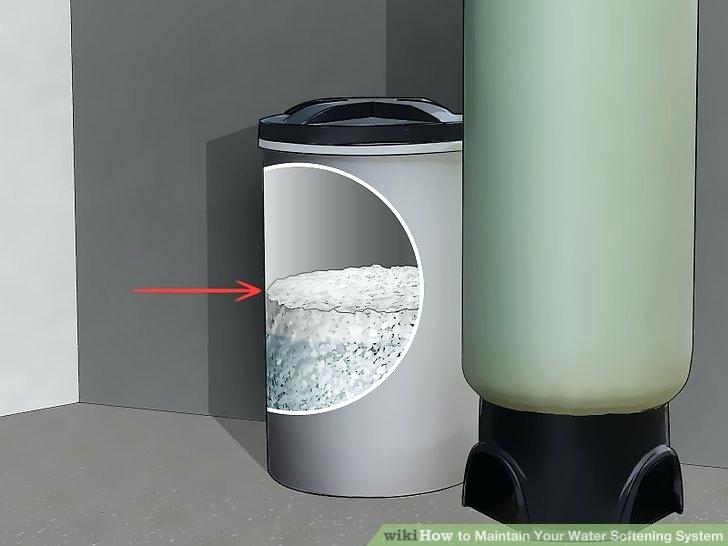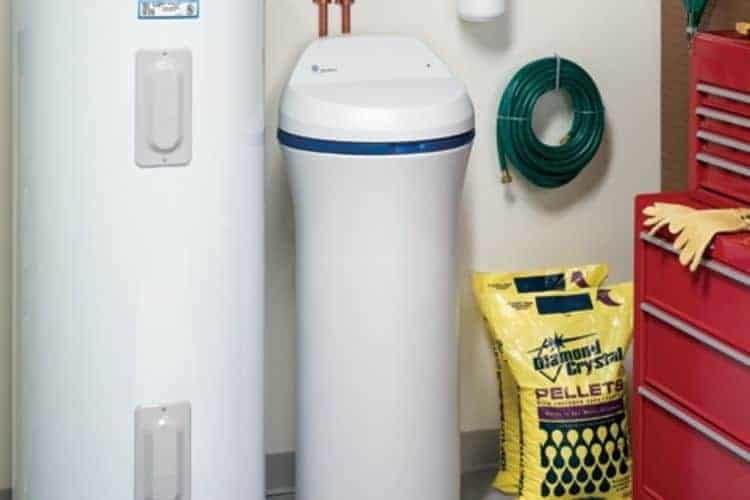Table of Contents

In order for your water softener to work properly, it’s important that you attend to some basic maintenance steps. Most notably, it’s important to keep your brine tank filled to the proper salt level. As such, homeowners often wonder: Exactly how frequently should salt be added to the water softening system?
There’s no simple answer to this question, as there are a number of factors that can impact your water softener’s rate of salt usage. Some of these factors include the size of the brine tank, the hardness level of your water, and the amount of water usage in your household.
With that said, there are a few simple steps you can take to maintain the right brine solution, ensuring consistently soft water for you and your family members. Here are some guidelines from Carter’s My Plumber, a top water softener company in Indianapolis.
See if Your Water Softener is Running Out of Salt
First, it’s important to keep an eye on your salt level, just to make certain that your brine tank is sufficiently full. It’s usually very easy to lift the lid of your brine tank to get a peek inside. The question is, how can you tell when your water softener is low on salt?
Basically, if the salt level is below the water level, that means you need to add new salt to your tank. When the salt level gets too low, that means it’s simply not doing what it’s supposed to do to keep your water nice and soft.
Add Salt When Needed
What’s the best way to add salt to the tank? First, make sure you can locate the tank where sodium chloride is placed. You don’t necessarily need to worry about getting the amount precise; feel free to just dump in a bag of salt or two, depending on your system’s needs. Remember, the goal is for there to be dry salt visible above the water level.
Check Your Salt Level Regularly
Again, there’s no simple answer when it comes to how often you should add salt to your water softening system. It all depends on the size of your system, how hard your water is, and how much water you use in your family. (So, the larger the household, the more often you’ll need to add salt.)
As a rule of thumb, we would recommend checking your salt level twice a month, adding to it as necessary.
Get the Right Kind of Salt
Something else to keep in mind: Maintaining your water softener isn’t just about the frequency with which you add salt. It’s also important that you select the right kind of salt.
At Carter’s My Plumber, we recommend salt pellets for most systems. That’s because salt pellets are usually the purest type of water softener salt, meaning the salt dissolves completely and doesn’t form bridges that clog the system. Bridging is much more common with rock salt and solar salt, making pellets the best option for the majority of homeowners. (Potassium chloride can be a good alternative for homeowners who have health problems and need to carefully regulate their salt intake.)
Talk to a Water Softener Specialist
If you’re unsure about how many pounds of salt to add, or how often to add it, you can always contact your local plumbing company. Specifically, a water softener specialist can evaluate your system, test your water hardness level, and make a recommendation that’s suitable for your household.
Carter’s My Plumber is a trusted water softener specialist, proudly serving homeowners throughout the Indianapolis area. Contact us whenever you’re ready to schedule a water softener maintenance appointment, or to ask questions related to water softener installation cost.

Frequently Asked Questions
How long does a 40 lb bag of water softener salt last?
We hear questions like this often, and the answer is that it really just depends on your system and your household water needs. While the average family will go through a 40 lb bag about once a month or so, your amount will vary. Another factor to consider is how often your water softener regenerates; if it’s nightly, then the average family may go through a 40lb bag every 10 to 14 days.
What happens if my water softener runs out of salt?
If your water softener runs out of salt, it won’t be able to run a full regeneration cycle or to soften your water. This means you’ll have more mineral content in your water, which can have a negative effect on your skin and hair, your pipes, your plumbing fixtures, and even your appliances.
Can you overfill a water softener with salt?
We generally recommend keeping the brine tank about half full, or maybe just a tiny bit more. Overfilling the system will mean older salt will stick to the sides of the tank, which may result in some minor maintenance issues down the road.
How often should I regenerate my water softener?
We recommend regenerating every night, which can really help with keeping the skin and hair moisturized.
How often should brine tank be cleaned?
Try to clean the brine tank every time you refill it with salt, which for many homeowners will work out to once a month or so.
Why is my water softener going through salt so fast?
Your water softening system is connected to the rest of your home plumbing system. So, if your system goes through salt faster than you think it should, that might mean you have a leak somewhere, or a toilet that’s running too much.
What is the life of a water softener?
With the right maintenance, your water softener system can last for 10 to 20 years.
What is better, salt pellets or crystals?
Because they are more pure and reduce the risk of bridging, we typically recommend salt pellets over other types of water softener salt.
How do I check the salt level in my brine tank?
It’s usually pretty easy to lift the lid on the tank to conduct a visual inspection. Remember, you’re looking for some salt that is above the level of the water, which means some salt that’s still dry. If you have any questions about how to do this, we recommend contacting a water softener specialist in your area. For homeowners in Indianapolis, Carter’s My Plumber is here to help.



